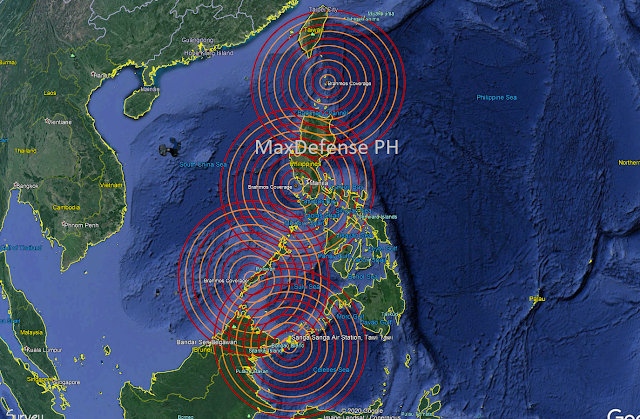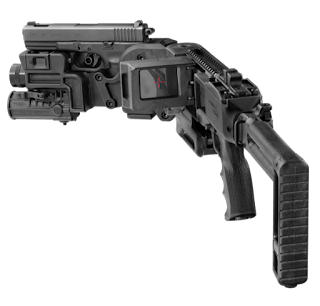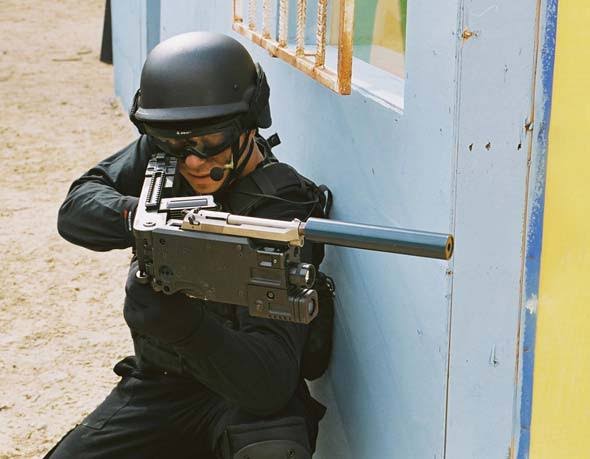Several news reports from both the Philippines and India have been made on the planned acquisition of BrahMos land-based anti-ship cruise missiles for the Philippine Army, as the Philippine Army also confirmed their plans based on the press releases and infographics they have shown to the public during internal occasions since late 2019.
In the last report from an Indian news outlet, Indian Ambassador to the Philippines Jaideep Mazumdar confirmed that the Philippine and Indian sides will continue discussion and finalize the deal for the export of Brahmos land-based missiles systems to the Philippines once the Covid-19 pandemic restrictions are eased, with the hope of closing the deal within 2020.
But it appears that the Philippine Army is not the only interested party in acquiring the Brahmos missile system. In fact, another branch of service has moved far closer to making that happen than the Philippine Navy, based on information MaxDefense received from Indian and Philippine sources.
As our headline says, yes, the Philippine Navy, on behalf of the Philippine Marine Corps (PMC), is also set to acquire Shore-Based Anti-Ship Missile Systems from India. And they might get it first before the Philippine Army.
This has been in our draft section for more than 6 months now, and it looks like now is the best time to report this development.
The 2nd List of Horizon 2 Phase Requests for Land Based Missiles:
The 2nd List of Horizon 2 phase of the Revised AFP Modernization Program (RAFPMP) actually included 2 similar projects requested by 2 different branch of services of the Armed Forces of the Philippines (AFP).
One is the Land-Based Missile System (LBMS) Acquisition Project of the Philippine Army with a requested budget of Php10 billion, and the Shore-Based Anti-Ship Missile System (SBASMS) Acquisition Project of the Philippine Navy with a requested budget of Php18.9 billion.
After separate evaluations made by the 2 service branches, it appears that both got into a conclusion that India's BrahMos land-based missile system is the best option they have.
While the Philippine Army is looking at having a missile system that can be used to attack naval targets and possibly land targets, the Philippine Navy appears to be looking more on hitting enemy ships from great distances.
According to MaxDefense's sources from defense and industry sources, the Philippine Navy was able to make the request for such system earlier than the Philippine Army. But after the Frigate Acquisition Project fiasco, the Philippine Navy's previous leadership under former Flag Officer in Command (FOIC) Vice Adm. Robert Empedrad decided to keep the project under wraps to avoid attention.
So far, MaxDefense has not heard or observe anything irregular on the project.
 |
| The Philippine Army previously disclosed its interest on the Brahmos missile system for its Land Based Missile System (LBMS) Project. Photo shared exclusively to MaxDefense. |
The Philippine Navy's Shore-Based Anti-Ship Missile System Project - A Background:
The Shore-Based Anti-Ship Missile System (SBASMS) Acquisition Project of the Philippine Navy was actually raised due to the Philippine Navy's disappointment on the decision by the Philippine Army to shelve an old project, the Shore-Based Missile System(SBMS) which was cancelled back in 2015 by the Philippine Army leadership led by then Philippine Army Command General Lt. Gen. Hernando Iriberri, who decided that the Philippine Army would rather spend the Php6.5 billion budget of the project for other essential projects.
One of the main purposes of the SBMS project was to assist the Philippine Navy in providing limited Anti-Access/Area Denial (A2/AD) capabilities in the West Philippine Sea including the Kalayaan Island Group, despite its limited range if deployed in Palawan.
The idea was to help give the Marines (which are under the Philippine Navy) a better chance to fight off a potential naval invasion of the KIG by Chinese or any other potential enemy force.
Back then, the Philippine Army has selected the IMI Systems Coast & Island Defense System (CIDS) which is essentially 2 batteries of land-based rocket launcher systems based on the IMI Lynx rocket-missile launching system, and the IMI Extended Range Artillery (EXTRA) guided rocket munition.
The IMI EXTRA is capable of delivering a 120 kilogram warhead with a maximum range of around 150 kilometers. MaxDefense sources from IMI Systems later on confirmed that it can actually go beyond 150 kilometers. The system was also capable of launching other munitions including the Delilah cruise missile which was among the future capabilities offered to the Philippine Arm should it have proceeded with the SBMS project.
 |
| The IMI CIDS based on IMI Lynx launcher and IMI EXTRA guided munitions. Photo credits to original source. |
Fast forward to 2016, the Armed Forces of the Philippines, specifically then AFP Deputy Chief of Staff for Operations (J3) BGen. Noel Clement submitted a "wish list" to the AFP leadership that includes "a singular shore-based capability (eg. Brahmos) to provide strategic-level firepower to defend the country".
From the statement made by J3, who eventually became AFP Chief of Staff from September 2019 to January 2020, it already appears that there was already sentiments from the military leadership on acquiring a more capable missile system than what the IMI CIDS can offer, with the Brahmos even cited as an example.
With the Philippine Navy left out by the cancellation of the Philippine Army's SBMS Project, the service then made a commitment to make sure that they will have their own shore based missile system, and won't be reliant on the Philippine Army.
This time, instead of a guided rocket system, both services are after an actual surface-to-surface missile system, which can do sea-skimming flight and course changes while flying to its target - something the guided rockets like the IMI EXTRA cannot do.
 |
| The Brahmos, like most anti-ship cruise missiles, fly at low levels of less than 15 meters from sea level. Photo taken from Pakistan Defence forum. |
Advantages on Selecting the Brahmos Missile System:
According to our sources, several models were considered by the Philippine Navy and Philippine Army, including Russian, Indian, Korean, and European solutions. In the end, both services agreed on acquiring India's Brahmos land-based missile system for the following reasons:
1. The Philippine government has been actively promoting an "Independent Foreign Policy" that is "Friends with all, Enemies of none". This includes expanding its sources of weapon systems, which includes considering products from India in which the Philippines has a growing relationship with. So far, India has failed to supply a more relevant weapon system to the Philippines aside from Force Protection Equipment (body armor, helmets) from MKU Ltd., and Thermal Imagers from Tonbo Imaging. Awarding this project to India gives the Philippines a good opportunity to expand relations with India.
2. Both services agreed to have a supersonic missile for consideration, rather than the usual subsonic missile used by most Western countries. A supersonic missile would be more difficult to intercept by hard kill solutions like gun and missile-based Close-In Weapon Systems (CIWS) due to its speed and ability to close the gap faster.
The missile also does an S-manoeuvre just before reaching its target, which makes interception even more difficult considering it is doing so while flying at supersonic speeds.
 |
| Gun-based CIWS like the Chinese Type 818 as shown above could be useless against supersonic sea-skimming anti-ship cruise missiles like the Brahmos. Credits to original source of photo. |
3. Having a supersonic missile means having a bigger kinetic energy upon impact. It means that a single missile could have devastating effects even to ships as large as a destroyer or cruiser, not just because of the warhead it carries, but also the force it bring at such speed.
4. Supersonic missiles also cover distances at a shorter time than subsonic missiles, which gives the target a smaller reaction time.
5. The Brahmos missile carries a 300-kilogram semi-armor piercing warhead, which can penetrate and damage even the toughest ship hull armor plating.
6. While Russia can also offer supersonic missiles, CAATSA issues remain a problem. Going with India means buying something comparable without the CAATSA issues with it.
7. Pricing is very competitive for the Brahmos missile system. Apparently comparable Western products are far more expensive and more difficult to obtain due to the system's tactical and strategic value.
Disadvantages:
While the Brahmos missile is a potent weapon, it also has disadvantages.
1. One cannot just fire anti-ship missiles at anyone anytime, unless fired upon. Should the Philippines be the first to fire in anger using this weapon without using other means to push away a naval threat, it could be a reason for a war to happen, and for world opinion to be against the Philippines.
2. The SBASMS has no other use other than to fire against enemy ships, or if the land attack missile is used, it can fire against enemy land targets. But that may not even happen during the entire serviceable life of the weapon system unless a real conflict between the Philippines and other countries happen. Thus, the weapon is more of a deterrent against other countries, which is exactly one of the main purpose of the Area Access / Area Denial (A2/AD) strategy.
3. Being land based means it is only bound within the land areas of the Philippine mainland. It is unsafe to send the system in the Kalayaan Island Group due to it being easy to be targeted by ship, land or submarine launched missiles, or by missiles launched by combat aircraft. Truck based means its mobility is also limited unlike ships or aircraft that carry anti-ship missiles which can move around a wider area and the platforms can be used for other purposes.
4. Related to the third reason, the Philippines being an archipelago means that it would not be easy to move around the truck-based weapon system without using ships or aircraft. For example, if it is deployed in Palawan, it would be dependent on the availability of roads to move around. Without transport ships or aircraft, it would be stuck within Palawan Island only.
5. It remains to be seen if India could export the newer version of the Brahmos land-based surface-to-surface missile variant, which increased the range from 290-300 kilometers to 500 kilometers. If the Philippines still get the older, shorter-ranged variant, the missile might not be able to cover the entire Kalayaan Island Group and West Philippine Sea/Philippine Exclusive Economic Zone even from the fringes of the Philippine Mainland.
MaxDefense is still trying to get confirmation from sources if the Philippine Navy, as well as the Philippine Army's Brahmos missile systems would be the newer variant which now has a 500 kilometer maximum range.
Despite the range, it might not be covered by Missile Technology Control Regime (MTCR) restrictions since the warhead is less than 500 kilograms, which is within the MTCR allowances.
While the Philippine Army is only after 2 batteries, the Philippine Navy is after 3 batteries of Brahmos anti-ship missile systems. Combined, this will give the entire Armed Forces of the Philippines with a total of 5 Brahmos anti-ship missile batteries which it could deploy in several locations, mostly facing the West Philippine Sea and to the northern end of Luzon facing the Luzon Strait and Babuyan Channel.
===============
With the COVID-19 crisis still hitting the Philippine economy hard, it remains to be seen though if this project will be given priority once everything goes back to normal.
But MaxDefense already received confirmation that, despite the COVID-19 restrictions, online training has began for select Philippine Navy, or more specifically, Philippine Marine Corps personnel. This includes theories and basic knowledge on missile systems, and on operating and maintaining the Brahmos missile system specifically.
This could be a good sign that the project would most likely be pushing thorough, despite the hefty price tag.
Stay tuned to MaxDefense Philippines for more updates regarding the Philippine Navy's Shore-Based Anti-Ship Missile System (SBASMS) Acquisition Project, as well as the Philippine Army's Land-Based Missile System (LBMS) Acquisition Project.
 |
| Typical connectivity of Brahmos missile system in coastal defense, this example as employed by the Indian armed forces. Credits to original source of photo. |
Project Summary:
Shore-Based Anti-Ship Missile System Project
Note: Edited as of 31 May 2020.
* End User: Philippine Navy (unspecified unit, most likely the Philippine Marine Corps)
* Quantity: 3 batteries on Shore-Based Anti-Ship Missile Systems
* Modernization Phase: 2nd List of Horizon 2 phase
* Project ABC: Php18 billion
* Acquisition Mode: Government-to-Government deal with India
* Source of Funding: AFP Modernization Trust Fund
* SARO Release: TBA
* Winning Proponent: TBA
* Product for Delivery:
- 3 batteries of BrahMos land-based supersonic anti-ship missile systems, including supporting vehicles and subsystems, spare parts and ammunition, and ILS.
* Contract Price: TBA
* First post by MaxDefense: TBA
* MaxDefense Searching Hashtag: #PNSBASMSAcquisition
* Status: Senior Defense and Military Leaders approval done, approval from DBM and Office of the President still pending. Final negotiations on hold due to Covid-19 travel and business restrictions, as well as potential funding issues due to funding diversion.
===============
===============
First post and edit: 31 May 2020
Copyright MaxDefense Philippines
























































